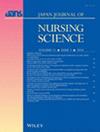The use of ultrasonography in education for undergraduate nursing students: A literature review
Abstract
Aim
The incorporation of ultrasonography into nursing practice is becoming more common, but how ultrasonography is used or applied in nursing student education is still unclear. This study aimed to review and synthesize relevant literature on the use of ultrasonography in education for undergraduate nursing students.
Methods
An electronic literature search was conducted in June 2022 (updated in June 2023) using MEDLINE, CINAHL, Scopus, and Ichushi-Web databases. Two researchers independently screened/assessed the eligibility of the studies, synthesized extracted data using a narrative synthesis (due to anticipated heterogeneity across studies), and evaluated the methodological quality of quantitative studies using the Medical Education Research Study Quality Instrument.
Results
Thirteen peer-reviewed articles were included in the review. All of the studies were conducted in high-income countries, and the majority of them employed an uncontrolled single-group design. Ultrasonography was used mainly for visualizing the vascular system to improve students' puncture skills, but it was also used with various other applications. The included studies were predominantly of moderate quality and heterogeneous, but all of them reported at least some benefits in nursing student education, such as enhancing knowledge and understanding of subcutaneous anatomical structures, and improving confidence in and/or skills of venipuncture and other visualization/assessment methods.
Conclusions
This review provides a broad perspective and highlights the potential use of ultrasonography in education for undergraduate nursing students. Further research is needed to develop standardized teaching methods/curriculum and competency assessments in order to ensure minimum competency standards for students and to improve clinical outcomes for patients.

 求助内容:
求助内容: 应助结果提醒方式:
应助结果提醒方式:


